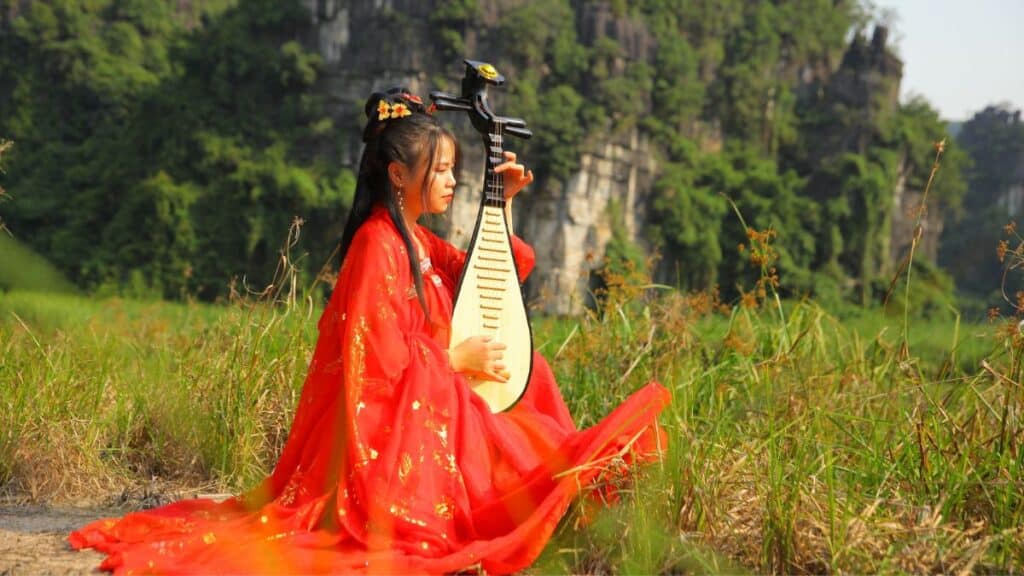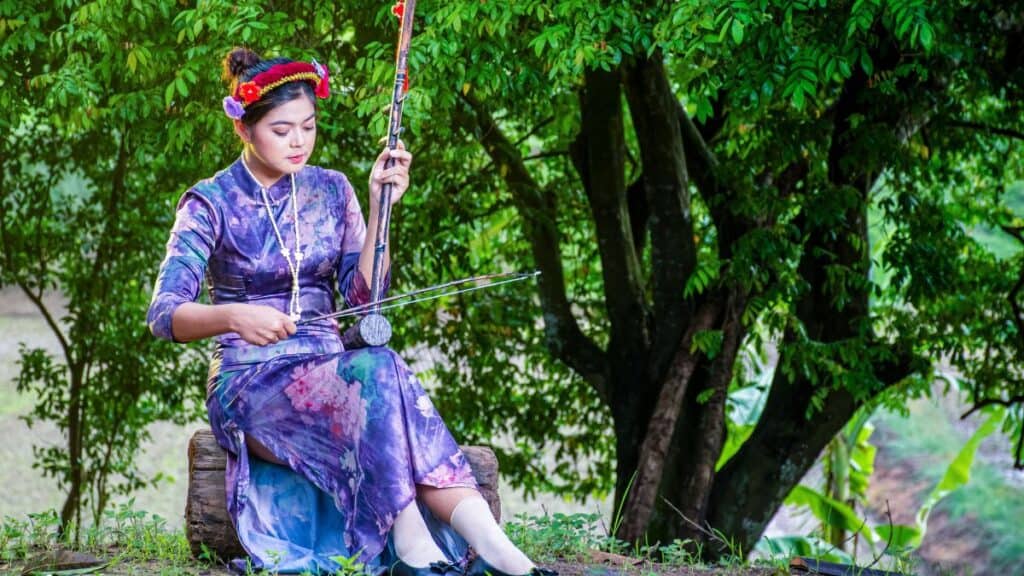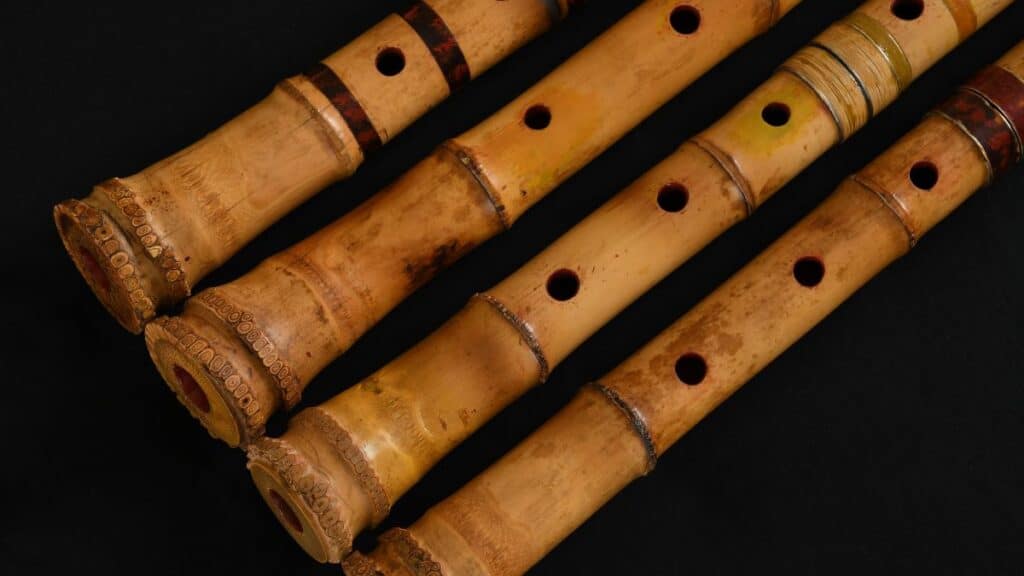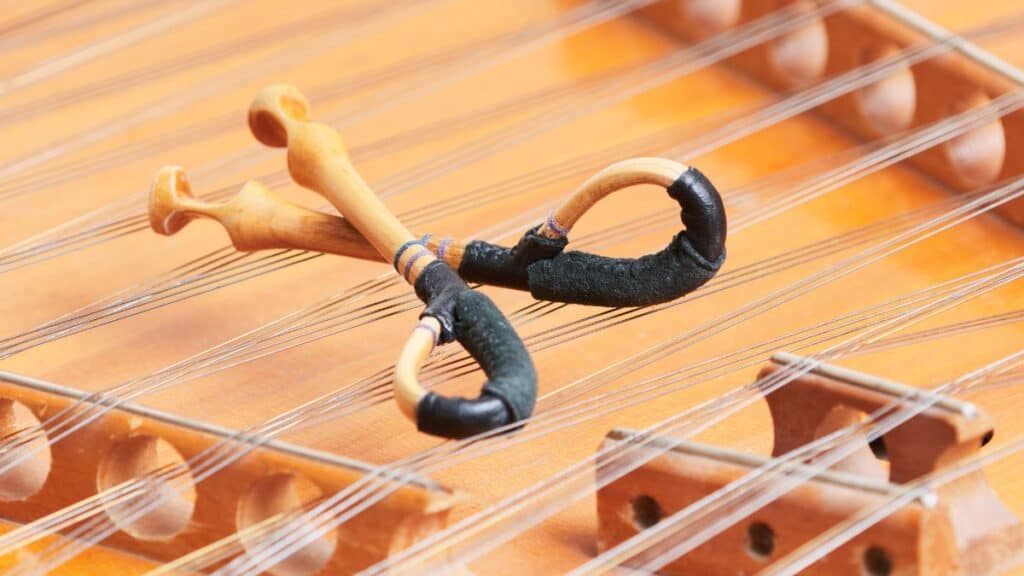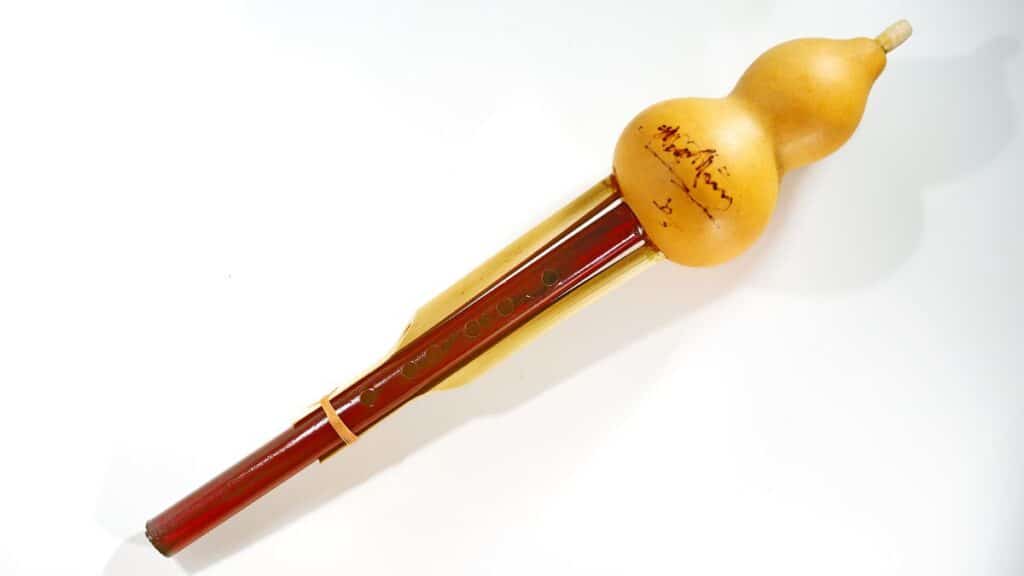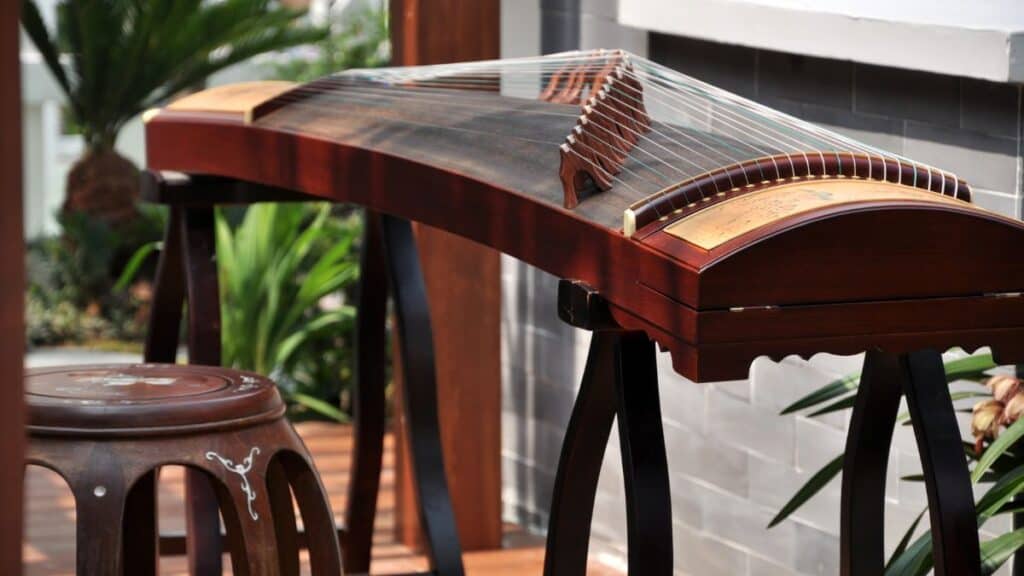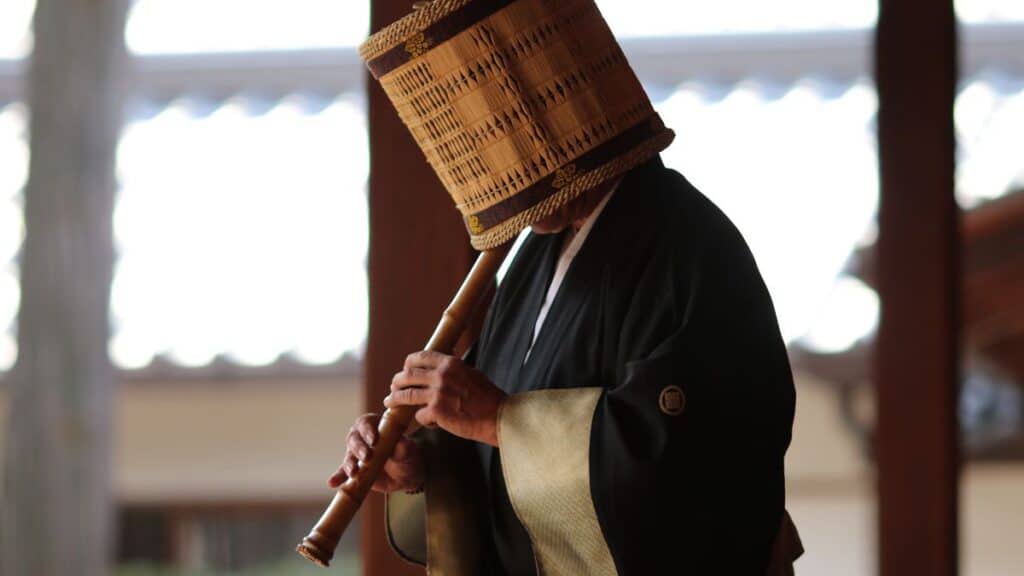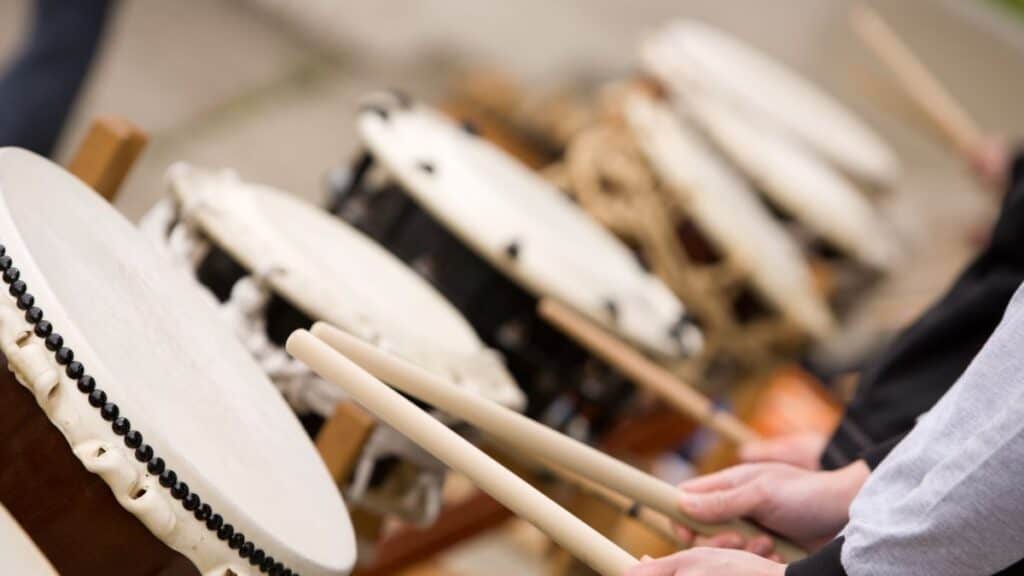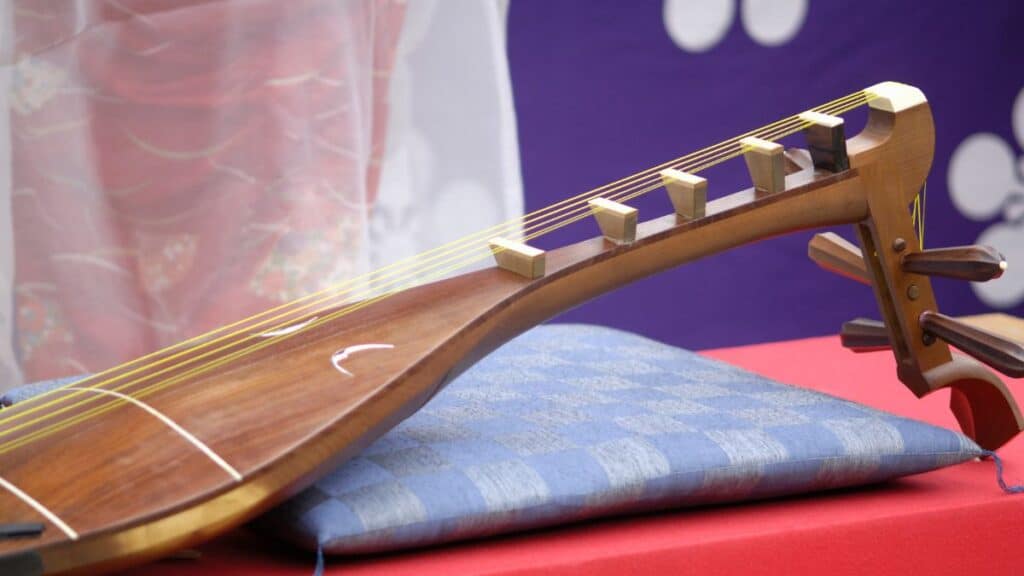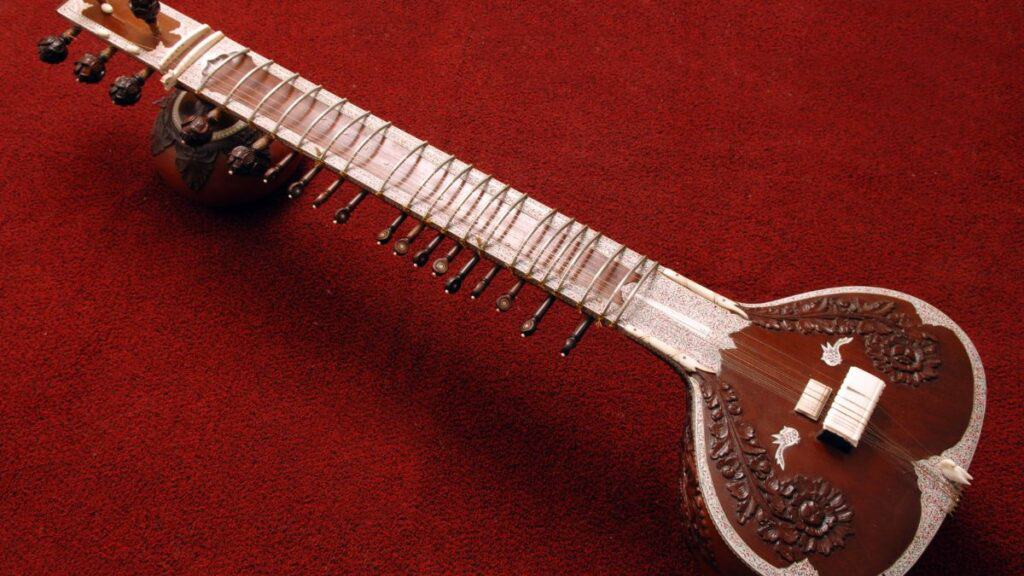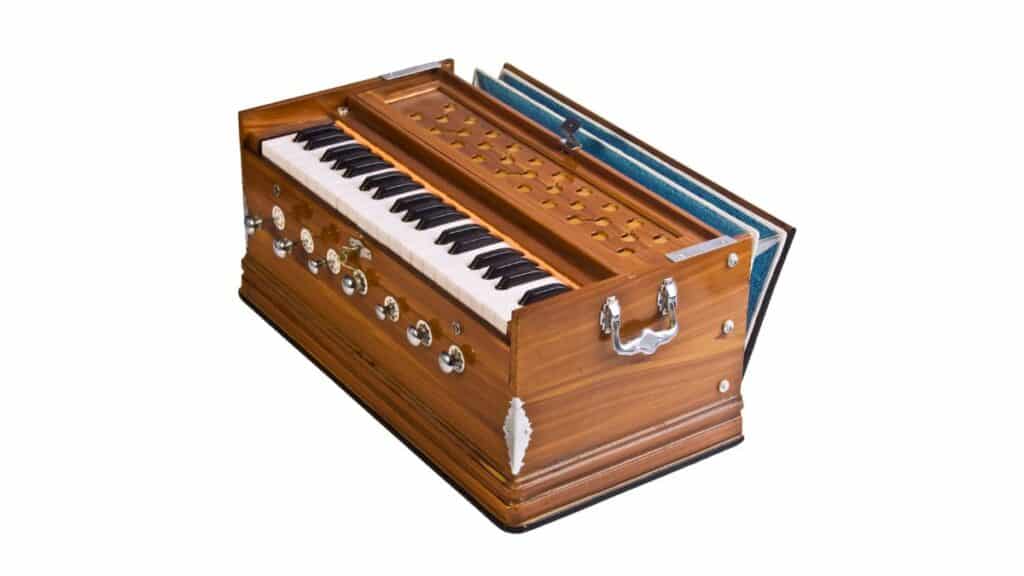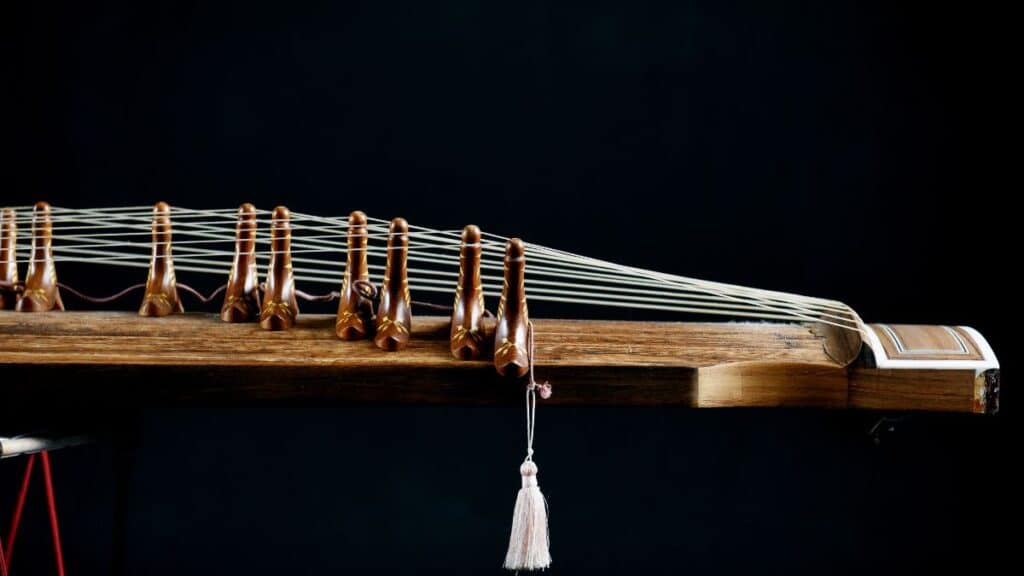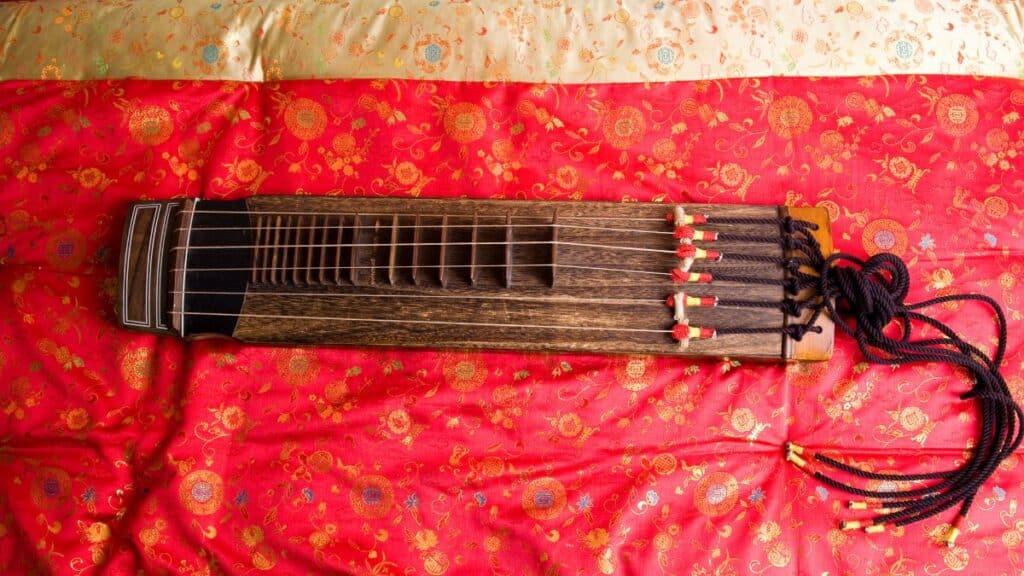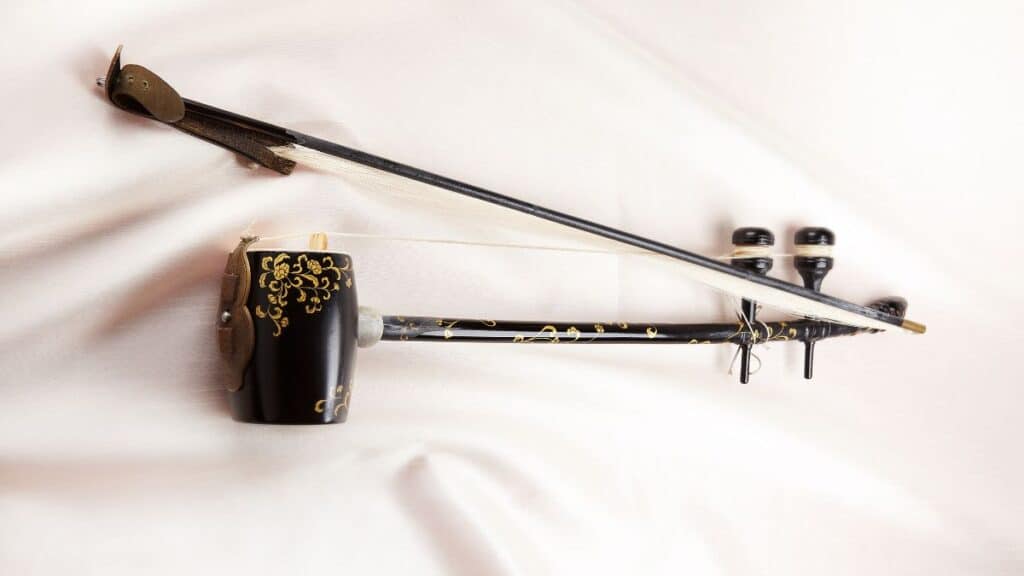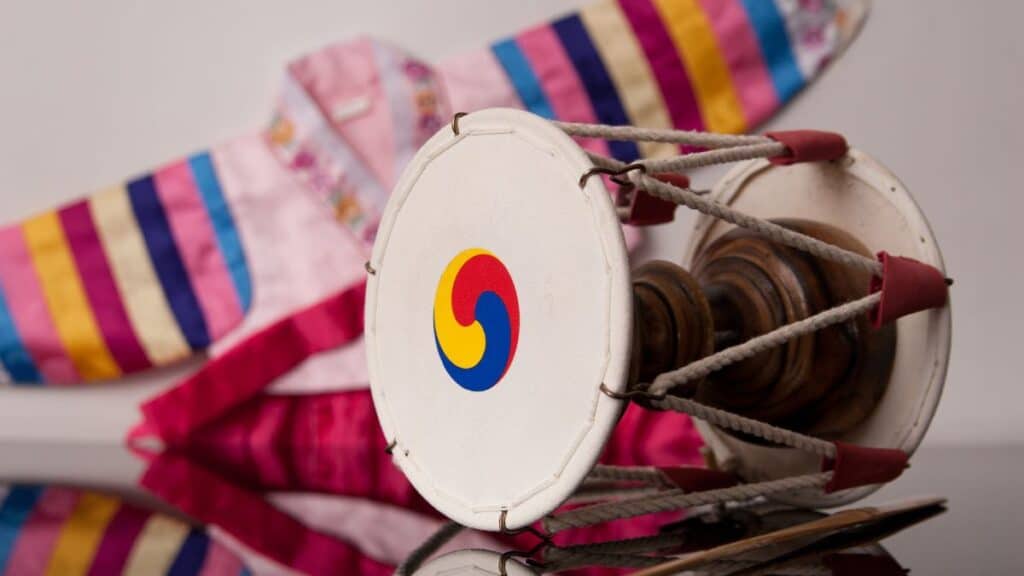In every corner of the globe, music serves as a universal language that transcends borders, bridging gaps between cultures, and binding people together with its harmonious threads. The story is no different in Asia, home to a plethora of diverse cultures, each with their unique musical traditions steeped in history.
Chinese Instruments
Chinese music, with its deep roots in philosophy, storytelling, and spirituality, stands as a key pillar in the rich heritage of one of the world’s oldest civilizations.
At the heart of this tradition lie the unique Chinese musical instruments, each crafted with precision, carrying forward the resonance of a millennia-old culture.
This section shines a spotlight on some of the most prevalent Chinese instruments that have sculpted the soundscape of the country’s musical legacy.
Guzheng (古筝)
The Guzheng, often referred to as the Chinese zither, is one of the Chinese musical instruments with over 2,500 years of history. Its enchanting sound and broad range have made it a mainstay in Chinese folk music and it is now gaining popularity worldwide.
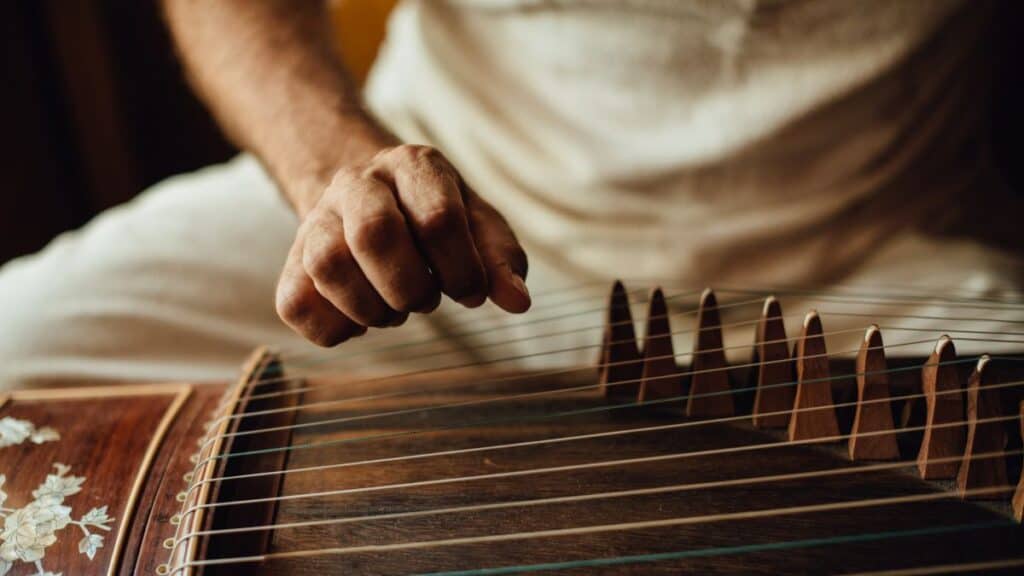
Pipa (琵琶)
The Pipa, sometimes called the Chinese lute, is a traditional Chinese musical instrument that has been plucked in Chinese households and courts for over 2,000 years.
With its pear-shaped body and distinctive sound, the Chinese plucked string instrument produces beautiful melodies that have won the hearts of listeners for centuries.
Erhu (二胡)
The Erhu is a two-stringed instrument, yet it can deliver an astonishing range of sounds, from mournful and haunting to light and melodic. Often referred to as a Chinese violin, it’s an essential part of Chinese instruments and orchestras.
This Chinese violin is one of the most recognizable instruments from this part of the world.
Dizi (笛子)
The Dizi is a Chinese transverse flute, and it holds a special place in Chinese music for its ability to express a variety of emotions.
This Chinese transverse flute is known for its sweet timbre and diverse tonal flexibility, used in both folk and classical music.
Yangqin (扬琴)
The Yangqin, or Chinese dulcimer, is a struck string instrument with a trapezoidal soundboard. Its hammers hit strings of different lengths, creating melodious sounds. The Yangqin adds a delightful and vibrant tonality to any Chinese ensemble.
Hulusi (葫芦丝)
The Hulusi, or “Cucurbit Flute,” is a traditional wind instrument that holds a cherished spot in the heart of China’s Dai people. Its enchanting sound has found its way into the folk music of several ethnic groups across China and Southeast Asia.
The Hulusi is a free reed wind instrument and is composed of a gourd that acts as an air reservoir, attached to a pipe with finger holes for melody, with three bamboo pipes. This charming instrument, with its pear-shaped body and bamboo pipes, is as pleasing to the eye as it is to the ear.
Japanese Instruments
The Land of the Rising Sun, Japan, has an ancient and sophisticated musical tradition, reflecting the nation’s profound respect for harmony and balance.
Japanese music, whether it’s the imperial court music of Gagaku, the traditional theatre of Kabuki, or the mesmerizing rhythms of Taiko drumming, showcases an impressive range of Asian stringed instruments. These instruments, deeply ingrained in the fabric of Japanese society, form a significant part of ceremonial, theatrical, and folk music practices.
Koto (箏)
The Koto, a 13-string zither, holds the title of Japan’s national instrument.
Revered for its serene and meditative sound, it’s been a crucial component of Japanese court music since the 8th century.
Shamisen (三味線)
A three-stringed instrument, the Shamisen resembles a banjo and can deliver a range of sounds, from gentle and lilting to powerful and intense.
Its importance in Japanese music is marked by its presence in traditional theatrical arts like Kabuki and Bunraku.
Shakuhachi (尺八)
The Shakuhachi is a unique end-blown flute made of bamboo.
It produces hauntingly beautiful sounds that have been associated with Zen Buddhism and the art of meditation.
Taiko (太鼓)
The Taiko drums are more than just musical instruments in Japan – they are a part of the nation’s cultural and spiritual fabric.
Their powerful beats can mimic the sounds of a battlefield, a festival, or a gentle rain, making them incredibly versatile.
Biwa (琵琶)
The Biwa, a short-necked lute, was traditionally played by Buddhist monks in narrative storytelling. Its robust, dramatic sound is uniquely suited to epic tales and musical accompaniment in traditional theatre.
These instruments, just like the previous ones, contribute to the rich tapestry of Asian music and their unique sounds continue to inspire and evoke emotions. Our musical journey now heads to the Indian subcontinent, home to a diverse array of string and percussion instruments.
Indian Instruments
India, with its vast cultural diversity and rich heritage, boasts a complex musical landscape that mirrors its multifaceted society. Classical Indian music, with its distinctive Ragas (melodic frameworks for improvisation) and Talas (rhythmic cycles), has given birth to a fascinating range of musical instruments. These instruments, deeply entwined with the spiritual and cultural fabric of India, reflect the country’s profound appreciation for musical nuance and detail.
Sitar (सितार in Hindi)
An integral part of Hindustani (North Indian) classical music, the Sitar is a plucked string instrument known for its complex and entrancing sound.
Its distinctive tonal quality and versatile nature have made it popular worldwide, transcending cultural boundaries.
Tabla (तबला in Hindi)
The Tabla, a set of twin hand drums, is a staple in Indian music. Each drum— the smaller, higher-pitched Dayan, and the larger, deeper-sounding Bayan— contribute to the Tabla’s rhythmic complexity.
They serve as the rhythmic heart of both classical and popular music in India.
Bansuri (बांसुरी in Hindi)
The Bansuri, a simple side-blown flute made of bamboo, holds a special place in Indian music and mythology.
Its sweet and mellow tone can express a range of emotions, making it a popular choice for Indian classical music.
Tanpura (तानपुरा in Hindi)
The Tanpura serves a crucial role in Indian classical music as a drone instrument. It doesn’t play melody but provides a constant harmonic drone against which the rest of the music unfolds.
Its sound is the very essence of Indian classical music, providing a sonic framework and grounding for the other instruments.
Harmonium (हार्मोनियम in Hindi)
The Harmonium, originally a western instrument, was embraced by Indian musicians in the 19th century and has since become a staple of Indian music. A reed organ with a hand-pumped bellows, it can accompany a singer or be used as a solo instrument, providing a rich, layered sound.
These instruments, steeped in history, spirituality, and tradition, serve as conduits for expressing the depth of Indian music. Next, we will explore the dynamic world of Korean instruments and their contribution to the vast soundscape of Asian music.
Korean Instruments
Korea, with its deep-rooted historical and cultural heritage, has an engaging musical history that echoes through time. Korean music, from the royal court music of Jongmyo Jeryeak to the expressive folk genre of Pansori, features an array of traditional instruments that lend their unique voices to the diverse musical styles. These instruments not only facilitate the creation of beautiful music but also bear witness to Korea’s cultural evolution.
Gayageum (가야금)
The Gayageum, a 12-stringed zither, is one of the most well-known traditional Korean instruments.
Its distinctive, softly resonant sound has been used to convey the full spectrum of human emotions, making it a mainstay in Korean classical and contemporary music.
Geomungo (거문고)
The Geomungo, a 6-stringed zither, is known for its deep and rich sound.
This instrument, played with a bamboo stick, has a unique construction and playing technique, giving it a special place in traditional Korean music.
Haegeum (해금)
The Haegeum is a two-stringed fiddle that holds a key place in Korean music for its emotive and expressive sound, which closely resembles the human voice.
Its powerful timbre makes it a versatile instrument in both folk and classical settings.
Piri (피리)
The Piri is a double-reed woodwind instrument, often likened to an oboe. It has a hauntingly sorrowful sound, which makes it a popular choice for emotional and expressive pieces in traditional Korean music.
Janggu (장구)
The Janggu, an hourglass-shaped drum, is the most widely used drum in traditional Korean music. It can produce a variety of sounds depending on how and where it is struck, adding rich rhythmic patterns to any musical ensemble.
Each of these Korean instruments, like those from China, Japan, and India, carries with it a unique sound and history, contributing to the vivid and diverse soundscape of Asian music.
Respecting Traditional Musical Instruments from Asia
These instruments, among many others, are not just the tools that create music, but are the carriers of stories, history, and culture, the silent narrators of a thousand tales. They provide a harmonious language that transcends borders and time, offering a deeper understanding of Asian cultures and their remarkable diversity.
In our rapidly globalizing world, the preservation and promotion of traditional music and instruments is more important than ever. These instruments serve as reminders of our collective cultural heritage and highlight the importance of diversity in the global music scene. They enrich our musical language, broaden our sonic horizons, and deepen our cultural empathy.
It is our hope that this exploration encourages further curiosity and understanding of these unique Asian instruments. As we delve deeper into the world of music, let us keep our minds open to the varied sounds, styles, and stories that these instruments have to offer. Remember, the beauty of music lies not just in the sounds we hear, but also in the cultures, traditions, and histories these sounds represent.
So, pick up an instrument, listen to a traditional composition, or simply explore more about the musical traditions of Asia. Because, in the end, music is a journey – a journey of discovery, understanding, and above all, connection.


